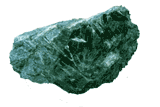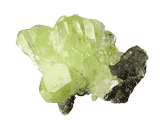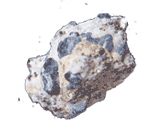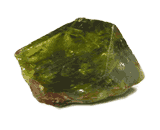| Gemstone Chart |
 Natural Actinolite Natural Actinolite
Actinolite is a natural mineral with the chemical formula Ca2(Mg,Fe)5Si8O22(OH)2.the crystals have a hardness of 5.5 on Moh’s scale, and there are two directions of cleavage. Natural actinolite is semi-precious to precious stone used in jewelry and other adornments.
Color: Green, Brown
Categories: semi-precious stone
Chemical Composition: Amphibole Group
Crystal Group: Monoclinic
Refractive Index: 1.620 - 1.642
Hardness: 5.5
Density: 3.05
Occurrence: Tanzania
|  Natural Diopside Natural Diopside
Diopside is a common mineral and is found worldwide. Diopside has several varieties, including a chromium-rich gem variety called chrome diopside.
Color: pale bluish green or dark blue green, brownish green or dark blue green. yellowish green or yellow bluish green.
Categories: semi-precious stone
Chemical Composition: CaMgSi2O6
Crystal Group: Monoclinic
Refractive Index: 1.665 - 1.730
Hardness: 6
Density: 3.25 - 3.55
|  Natural Sapphirine Natural Sapphirine
Sapphirine is a rare mineral, a silicate of magnesium and aluminium.Though Sapphirine clearly falls into the "rare stone" category, it is a relatively durable stone with a Moh's hardness of 7.5. Sapphirine's very distinctive appearance along with their somewhat unusual durability have made them fairly popular with collectors.
Color: Pale blue, bluish gray, greenish gray, green, purplish pink
Categories: semi-precious stone
Crystal Group: Monoclinic
Refractive Index: 1.714-1.723
Hardness: 7.5
Density: 3.4-3.5
Occurrence: U.S.A., U.K., Sweden, Czechoslovakia, Japan, South Africa, Greenland, Madagascar, Italy, Sri Lanka
|  Natural Sphene Natural Sphene
Sphene is also known as calcium titanium silicate.It is named from the greek word for wedge, because of its typical wedge shaped crystal habit.Because of it's high dispersion and refractive index, a well cut sphene can display stunning brilliance. Sphene is somewhat soft and as a result is more suitable as a pendant than as a ring stone. Sphene is rarely very clean.
Color: Green, yellow. brown
Categories: semi-precious stone
Chemical Composition: CaTiSiO5
Crystal Group: Monoclinic
Refractive Index: (1.885-1.990,)-(1.915-2.050)
Hardness: 5.5
Density: 3.52-3.54
Occurrence: Austria, Dheirene-Madagascar, India, USA, Brazil.
|
|
